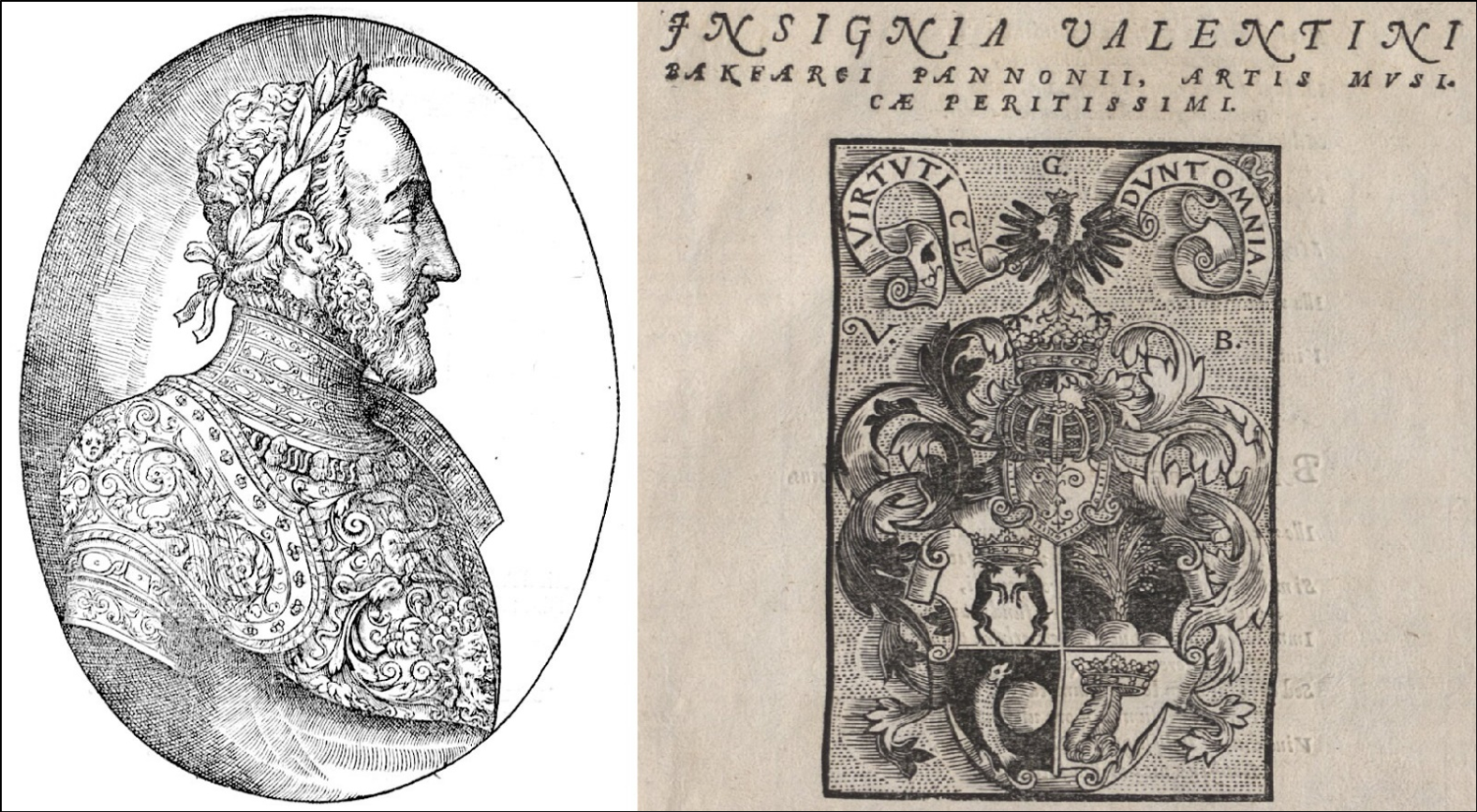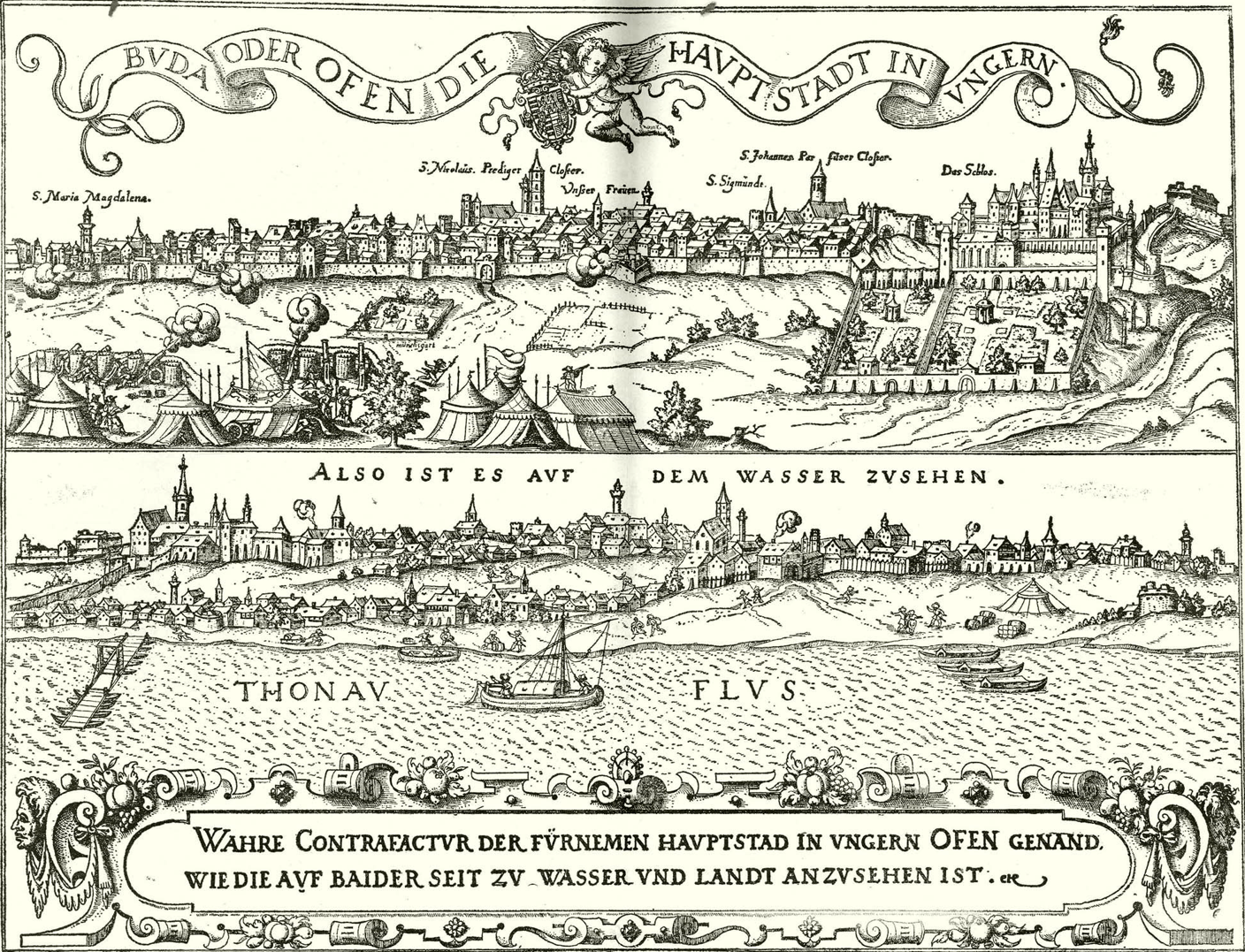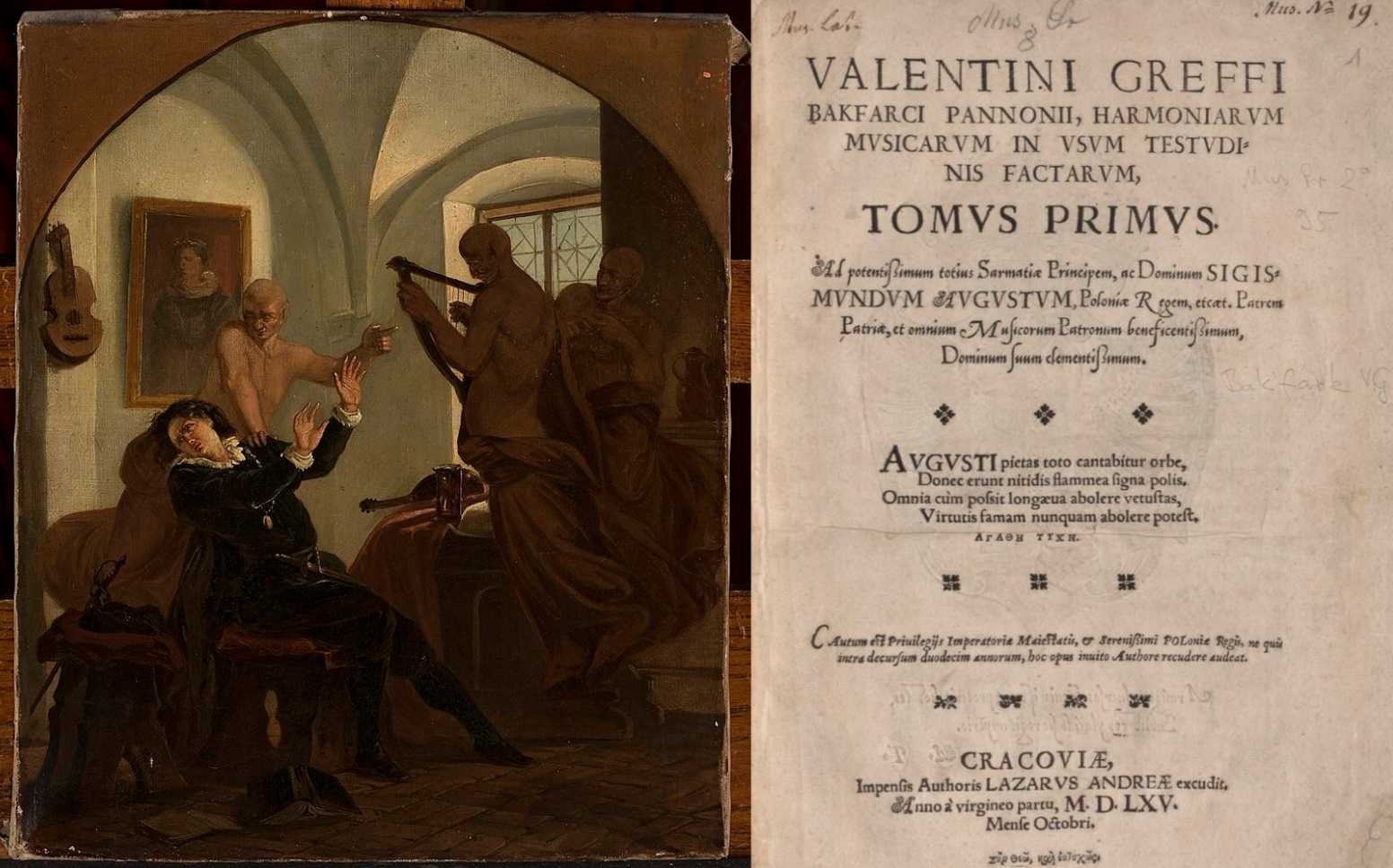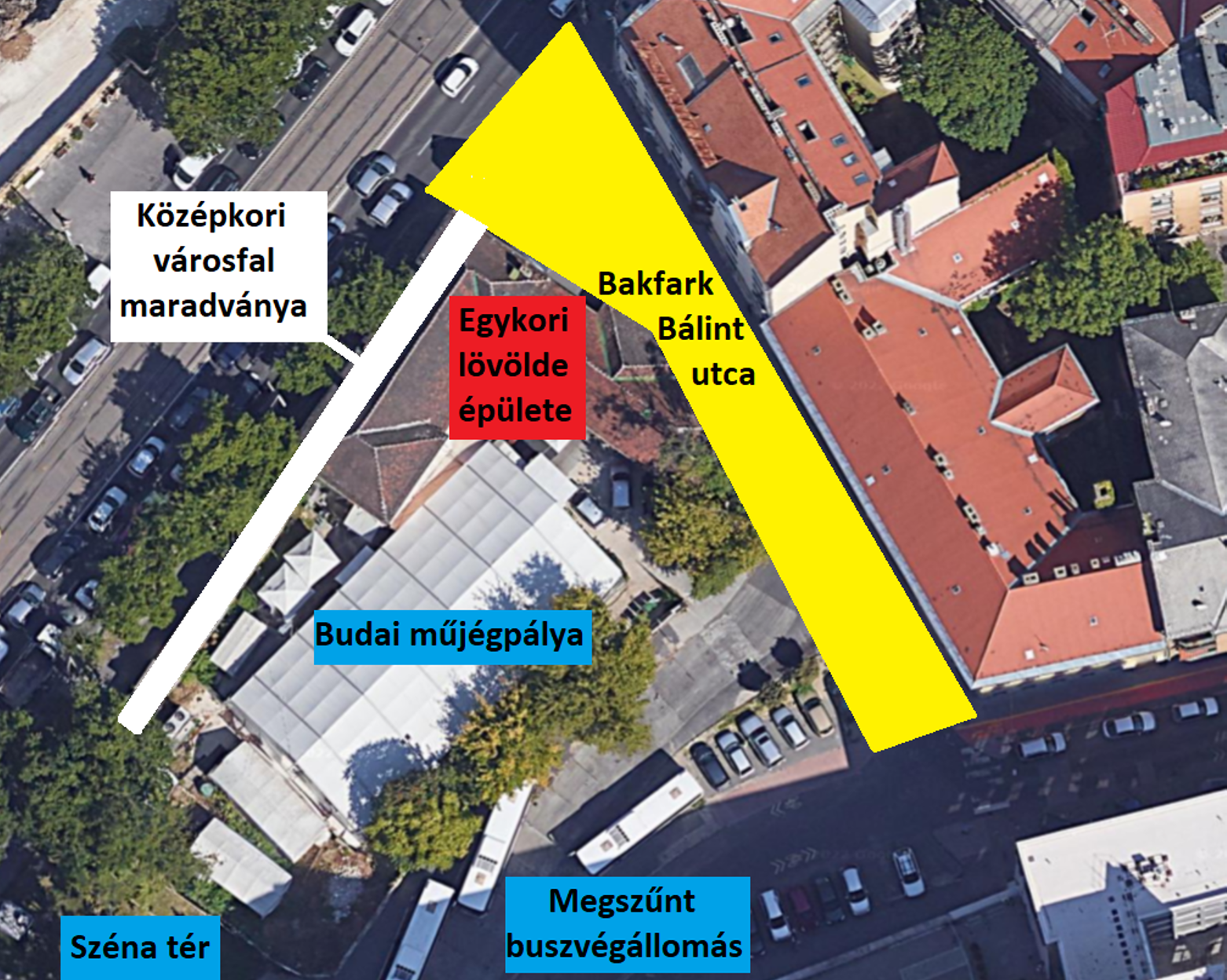The lutenist and composer Bálint Bakfark was born at the very beginning of the 16th century in Brașov in Transylvania (historians debate his exact year of birth, 1507 is the most accepted). The country had already passed the reign of King Mátyás Hunyadi, who introduced the striking results of the Italian Renaissance movements (be it literature, architecture, natural science or art) in Buda, and was the first to do so outside the area of "Italian boot". The other European "capitals", i.e., seats of rulers (for example, Vienna, Krakow, Paris) were reached by the spirit of the Renaissance quite a few decades later. Bálint Bakfark fell into this milieu as a child. He first came to Nagyvárad (Oradea, Romania) to study as a court lutenist at the Voivode of Transylvania János Szapolyai.

A depiction of Bálint Bakfark from the title page of his lute book published in Lyon in 1553. Next to it is the Bakfark's Family coat of arms from his lute book published in Krakow in 1565 (Sources: Wikimedia Commons; MDZ Digitale Bibliothek)
After the Mohács disaster in 1526, Szapolyai was elected King of Hungary under the name John I, and at that time the entire court, including Bálint Bakfark, moved to Buda, where the court music culture flourished under Mátyás and then the Jagiellonian kings. The young lute player perfected his skills here. While listening to choral music, he encountered so-called polyphonic composing: the essence of this is that someone is able to compose several independent parts so that they sound in harmony with each other and complement each other to the human ear. Bakfark skilfully transferred this technique (now considered fundamental) to his own instrument, and he was able to play especially difficult songs even alone.

The lutenist's first patrons: King John I (of Szapolya) and his music-loving wife, Queen Isabella Jagiellon (Source of images: Wikimedia Commons)
Bakfark became a popular and respected member of the royal court. The royal couple was so pleased with him that King John awarded the young lutenist with a noble title. However, the storm of history soon hit Buda: after John I died in 1540 and the Turkish occupation of the capital was approaching, the musician could no longer use his skills at home.

The portrayal of Buda in 1541, during the siege, from the west (above) and east (below). Engraving by Johan Siebmacher based on a contemporary drawing by Nikolaus Meldemann (Source: mek.oszk.hu)
The young lute player and his patron, Isabella Jagiellon, parted ways: the widowed queen returned to Transylvania from Buda, and Bakfark (in today's terms) began to build an international career. He first served in the French royal court in Paris and then in Krakow in the Polish royal court. In the latter place, Isabella Jagiellon's brother, King Sigismund II Augustus and his mother, Queen Bona Sforza took him under their patronage. In Königsberg, he won the support of the Prince of Prussia, even the German-Roman Emperor Maximilian II (the "other" king of divided Hungary) invited him to Vienna. He mostly lived in Vilnius, where he got married. The talent that started in Buda has toured Europe from Lyon to Gdansk, from Venice to Wittenberg with its virtuoso playing and innovative solutions. Several of his lute books have been published in different countries. A cult developed around him in Poland: he became a character in poems and paintings.

The painting "Bakfark, Lutenist of Queen Bona" from 1856 (by the Polish artist Ignacy Gierdziejewski). Next to it is the title page of the musician's lute book printed in Krakow in 1565 (Sources: Wikimedia Commons; MDZ Digitale Bibliothek)
He never returned to Buda, which was occupied by the Turks, but for the last time, he served in Gyulafehérvár (Alba Iulia, Romania) with John Sigismund (the son of Bakfark's first patrons, John I and Isabella Jagiellon). He died in Padua after 1570 as a result of a plague (historians also debate the exact year of his death).
Bálint Bakfark's years of study in the Hungarian capital helped him acquire the broad knowledge that ultimately enabled him to shape European music culture. Posterity paid their respects to him very late: in 1987, in the 2nd District of Budapest, the Ipari Tanuló Street next to Széna Square was renamed after him. It is an interesting coincidence that this small street is in perpendicular contact with one of the city walls of medieval Buda, which even Bakfark could see with his own eyes.

The northern end of Bakfark Bálint Street meets the remaining part of the medieval city wall stretching along Margit Boulevard. Together, the two surround the building of the former Buda civil shooting range (Source: Google Earth)
The wall meant to protect the Lower City served its purpose until 1686 when a large part of the city wall was shot down during the siege of Buda. Its remains were discovered by Kálmán Lux in 1934.

The remaining part of the Lower City defence wall built in the Middle Ages is next to Margit Boulevard, from the direction of Bakfark Bálint Street. Recorded in 1969 (Source: Fortepan/No.: 126383)
During World War II, several parts of the wall were damaged, and they were demolished in the 1950s. The roof of the intact section along Margit Boulevard received a protective layer to partially protect the monument from the elements.

A "hint of the Middle Ages" next to Bakfark Bálint Street - the lutenist could also see this wall. Behind it is the building of the former Buda civil shooting range (Photo: Dávid Mészáros/pestbuda.hu)

The slightly worn plaque on the city wall (Photo: Dávid Mészáros/pestbuda.hu)
Another interesting fact is that a part of the wall has been used as a house wall since 1754: that's when Buda's first civil shooting range was built. Since 1696, the site has been used for shooting practice with the aim of preparing the population in case the expelled Turks attack Hungary again with large forces. The Baroque building of 1754 was expanded with a Classicist wing in 1826 based on the plans of master builder Lajos Kimnach. This wing has survived to this day and is largely located on Bakfark Bálint Street.

Pedestrian crossing on Bakfark Bálint Street, parked cars in front of the former Buda shooting range building. On the right side of the building, part of the medieval city wall can be seen that served as a house wall. Recorded in 1979 (Source: Fortepan/No.: 207335)
In 1868, Franz Joseph also visited the shooting range. At the turn of the century, there was already a restaurant there. Nowadays, the shooting range has ceased, the restaurant remains, the demolished Baroque wing is now replaced by a covered artificial ice rink.

Bakfark Bálint Street photographed from the north. To the right is the former shooting range building. In the background stands the Economic Judicial College of the Budapest-Capital Regional Court (Photo: Dávid Mészáros/pestbuda.hu)
A battle scene from 1956 is also connected to Bakfark Bálint Street: two industrial students fired a series of shots from here in the direction of Soviet troops coming from Széna Square in order to defend their own dormitory. They were able to avoid the deadly retaliatory strike in time by fleeing the scene through the dormitory's backyard.

Bakfark Bálint Street photographed from the south. The building on the right was the dormitory for industrial students (this gave the street its former name) (Photo: Dávid Mészáros/pestbuda.hu)
As small as the street named after the lutenist is, there are so many plaques on the walls of local buildings: two commemorate Bakfark, and one commemorates the shooting range. The latest sign was placed in October 2022 in memory of the two industrial students who fought in 1956.

On the far left are the commemorative plaques for Bálint Bakfark, on the upper right for the shooting range building, and on the lower right for the local event in 1956 (Photos: Dávid Mészáros/pestbuda.hu)
Budapest duly commemorated Bálint Bakfark, whose achievements prove the power of Hungarian intellectual knowledge dating back centuries. Without his art and works, the world of music and our universal culture would be poorer.
Cover photo: Buda in the late Middle Ages, based on the portrayal seen in the Schedel Chronicle. The picture appeared in the 1846 book "The days of the Hungarian nation after the Mohács disaster". The smaller picture shows Bálint Bakfark from the artist's 1553 Lyon book (Source: Wikimedia Commons)




































Hozzászólások
Log in or register to comment!
Login Registration